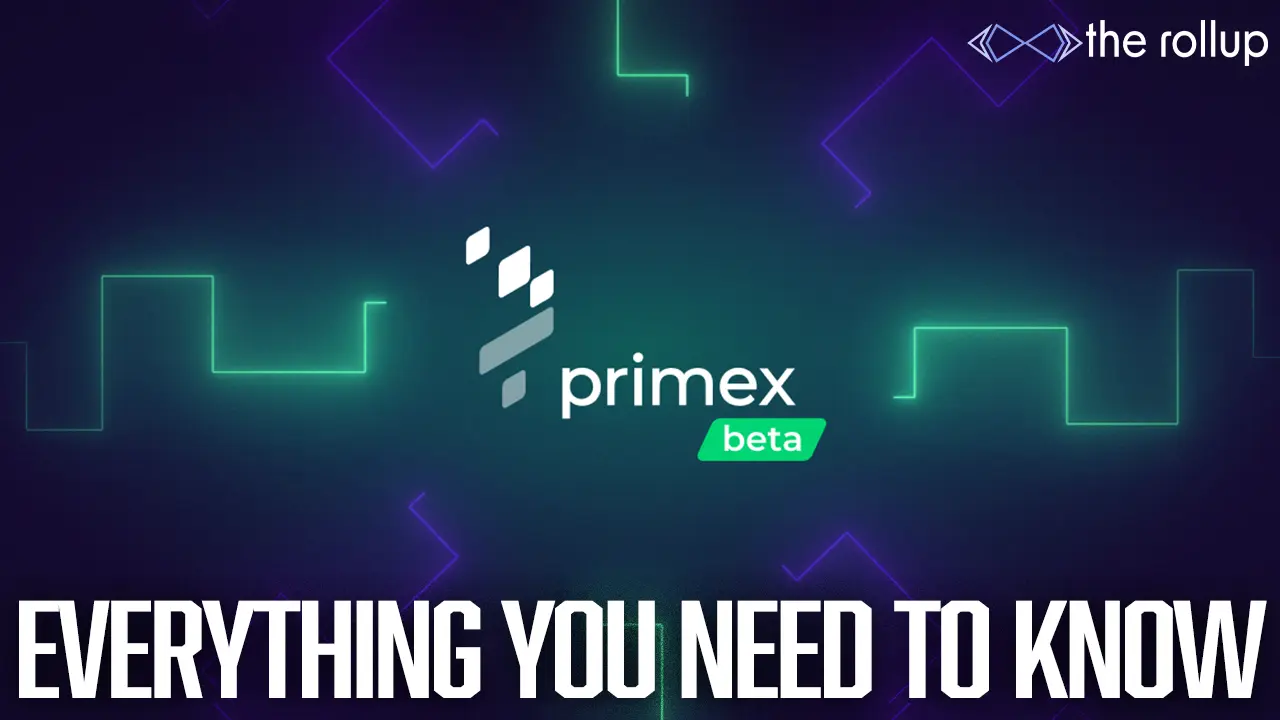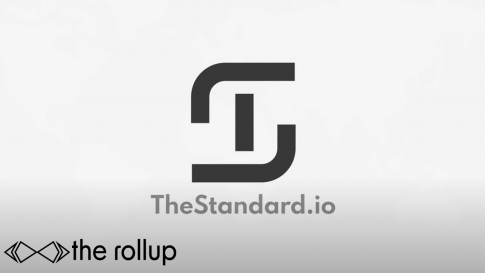A brief history of inflation and how Ramifi is tackling the issue with a better way to measure purchasing power
Take one step closer to sovereignty every single week, join the DeFi Slate community below:
DeFi Slate Fam:
Inflation is a topic near and dear to every one of us in the cryptocurrency community.
Bitcoin continues to gain popularity presumably as a primary hedge to inflation.
Nevertheless, active market participants are still at the mercy of inflation when using fiat or stablecoin alternatives. That’s where Ramifi comes in.
In this piece we ask Ramifi’s founders the pressing questions on inflation and what their team is doing to help detach crypto users from the deterioration of purchasing power.
Learn. Grow. Achieve. Happy Monday Fam!
-Rob

???? Big Ups To Our Great Sponsor Aave: Earn Interest & Leverage Your Assets with Aave, a non-custodial money market protocol leading the #DeFi charge.
Master it Monday: Stablecoins and the Inflation Hedge with Ramifi Protocol
When Did Inflation Get Out Of Hand?
It’s a tricky question to answer. On the one hand, inflation has been out of control for decades, ever since the US moved away from the gold standard and became an unbacked fiat currency. Even before that, inflation was a huge problem due to constant money printing. Before 1973, the government imposed constraints via backing currencies with commodities.
On the other hand, inflation has yet to get really out of hand. Inflation is a force that lags behind money printing. Once the newly printed money hits the market, it can take years for inflation to show up in the consumer economy. Over 20% of all US dollars to have ever existed left the money printer in 2020. The coming years will resemble inflation that will likely range between Argentina in 2019 and Germany in 1923.
Why Are Commodities A More Reasonable Basis For The Value Of A Currency?
Unlike fiat currencies, you can’t will more commodities into existence. Obtaining those resources takes enormous effort; You have to drill for oil, mine for gold, and harvest timber. The demand for commodities drives the supply. That demand is what we call inelastic – it doesn’t fluctuate too much over time.
Demand may trend up or down over time, but the speed at which it occurs generally gives the “supply” side of the equation time to catch up. In other words, commodity values reflect what currencies should be: stable.
The Federal Reserve, by its own admission, has a mandate of achieving stable prices. With the dollar losing over 93% of its purchasing power since 1913, we can confidently say the Fed has utterly failed its goal. Commodities are more stable than central banks and therefore are a more reasonable basis for currency.
What Do You See As The Near, Immediate, And Long Term Consequences Of Using The CPI To Track Inflation?
The Consumer Price Index (CPI) is a fantastic concept marred by human error. Debates about whether the CPI should be a Cost of Goods Index or a Cost of Living Index persisted for decades, with the latter ultimately winning out. The victor led to a problem – back in the 1980s, the Fed allowed a series of substitutions that heavily skewed how the CPI reports inflation. If you use the older, more reliable version of the CPI and take out substitutions, inflation is currently running around 10%.

The immediate implications are clear: the CPI will continue to understate consumer inflation drastically. It’s a reality that will likely continue to go unnoticed and under-reported. In the near-term, something has to give. You don’t see low inflation reports with a backdrop of runaway money printing and rising costs for long before people begin to wonder what they’re missing.
The long-term historical implications of using the CPI to track inflation are dubious. Society will very likely look back on the underlying metrics within the CPI and say, “What the hell were we thinking?”
The rise of decentralized finance (DeFi) will enable much more potent and accurate tools to track inflation. It’s a new financial era that will rightfully undermine the CPI’s credibility – not that it needs much help with the process. Ramifi is one of those tools.
How Is Ramifi Solving The Issue Of Inflation?
Ramifi is making currency fungible again by combining traditional and synthetic commodities. The Ramifi protocol tracks over 150 commodities and weights them based on trading volume – an average value reflected in a single RAM token price.
On day one of launch, this basket of commodities is pegged 1:1 to a dollar. It will generally trend upward over time as the dollar continues to inflate. In this way, RAM tokens are like the CPI without opaque substitutions.
We algorithmically adjust for outlier events in a commodities price (such as oil’s recent tumble into negative price territory) to accurately represent the long-term commodity price trend. The algorithm makes Ramifi an excellent representation of long-term commodity value, denominated in inflation-adjusted dollars. With that level of accuracy, RAM tokens are the perfect tool for tracking how the general costs of goods increase over time as the dollar continually loses value.
Ramifi leverages an elastic supply protocol to account for user demand and ensure the RAM token price only reflects dollar inflation – not user supply and demand. We accomplish that process by a periodic rebasing that proportionally adjusts the total token supply.
Here’s an example: John is the proud owner of 100 RAM tokens. Let’s say the price of our commodity basket has risen to $10, accurately representing dollar inflation. However, the current price of RAM tokens is $12. John’s total RAM token value is $1200 (100 RAM * $12).
That represents a 20% deviation from our commodity baskets price. A rebasing of 20% will occur, decreasing RAM’s price to $10 and increasing the total amount of RAM tokens proportional to each user’s holdings. John receives an additional 20 tokens to reflect the 20% rebase, so he now owns 120 RAM tokens valued at $10 each.
John’s total portfolio value doesn’t change ($10 * 120 RAM = $1200). The rebasing adjusted the value of RAM tokens to reflect the value of our commodity basket accurately.
What Is Ramifi’s Fit Into The Crypto Ecosystem And The Overall Financial Ecosystem?
Ramifi solves a significant issue with existing stablecoins in the crypto ecosystem. Existing stablecoins track the face value of the dollar without accounting for the persistent force of inflation. Due to the dollar’s diminishing value, stablecoins aren’t stable at all – calling them “synthetic dollar pegs” would be more accurate.
Ramifi provides users with the ability to hedge their portfolios against both market volatility and inflation. The approach is unique to Ramifi and allows the crypto ecosystem and, more specifically, the DeFi ecosystem to integrate and overhaul the legacy financial industry successfully.
As DeFi continues to disintermediate retail financial transactions, institutional interest in this technology stack is accelerating.
For example, Fidelity started mining Bitcoin in 2015 and is actively building cryptocurrency-focused software for their institutional clients. The world’s largest financial firms clearly see the trend – inflation and the dollar are becoming increasingly volatile. Synthetic commodities are emerging as a form of stable currency in an increasingly unstable world.
Ramifi is the bridge between the legacy financial ecosystem of the present and the distributed digital financial ecosystem of the future. As the dollar wanes, synthetic commodities will continue to rise – Ramifi is in a unique position to bond these two realities together.
What Are Your Expectations For Ramifi In 2021?
The following year is going to be absolutely massive for Ramifi. Inflation, monetary policy, and commodity prices have never been more unpredictable. Goldman Sachs has already called the next commodity super-cycle, demonstrating that commodity prices will explode in the coming years. Given that commodities correlate with inflation, it’s going to be a wild ride.
The successful launch of our testnet heralds the beginning of our exciting journey. We’ve had a fantastic amount of community support, with over a thousand Telegram users joining at lightning speed. We’re also coming up on our private sale very quickly and have seen immense interest from VCs and private investors.
Ramifi demonstrates the importance of blockchain interoperability by conducting our capital raise on Polkadot’s incubator, Polkastarter, while formally launching on the Ethereum blockchain. We intend to accomplish all of that in the first quarter of 2021!
We’re also in talks with Chainlink regarding implementing a fully decentralized oracle dedicated to tracking commodity prices. Ramifi currently relies on market leaders that handle billions of dollars in transaction volume daily for our price feeds. That is why we’re excited to take things a step further with Chainlink later in the year.
???? Sponsor Update: Oxis Wallet is an easy-to-use, non-custodial wallet for DeFi degens like us. Secure, safe, and simple, the Oxis Wallet is a must have!

You know what they say…not your keys, not your coins 😉
⚠️ DISCLAIMER: Investing into cryptocurrency and DeFi platforms comes with inherent risk including technical risk, human error, platform failure and more. At certain points throughout this post, we might get commission for promoting certain projects, if this is the case we will always make sure it is clear. We are strictly an educational content platform, nothing we offer is financial advice. We are not professionals or licensed advisors.
Liked this post? Share with a friend 🙂
Subscribe to the DeFi Slate Newsletter & join thousands of other crypto enthusiasts:
????Check Us Out On Twitter!
????Join the community on Telegram Channel to get our free V.1. yield farming guide!
????Subscribe to our YouTube channel!
Last week in review:
????$0->$3B in less than a year: Looking Ahead with Aave in 2021 ft. lead dev Marc Zeller
????DeFi By Design EP #20: 2021, The Year of The Stablecoin?
Check out some previous interviews:
DeFi Slate x TheEther: A social governance experience for Ethereum
DeFi Slate x Nick Fett: Oracles, Tellor, and the future of DeFi
Recent tweets:





